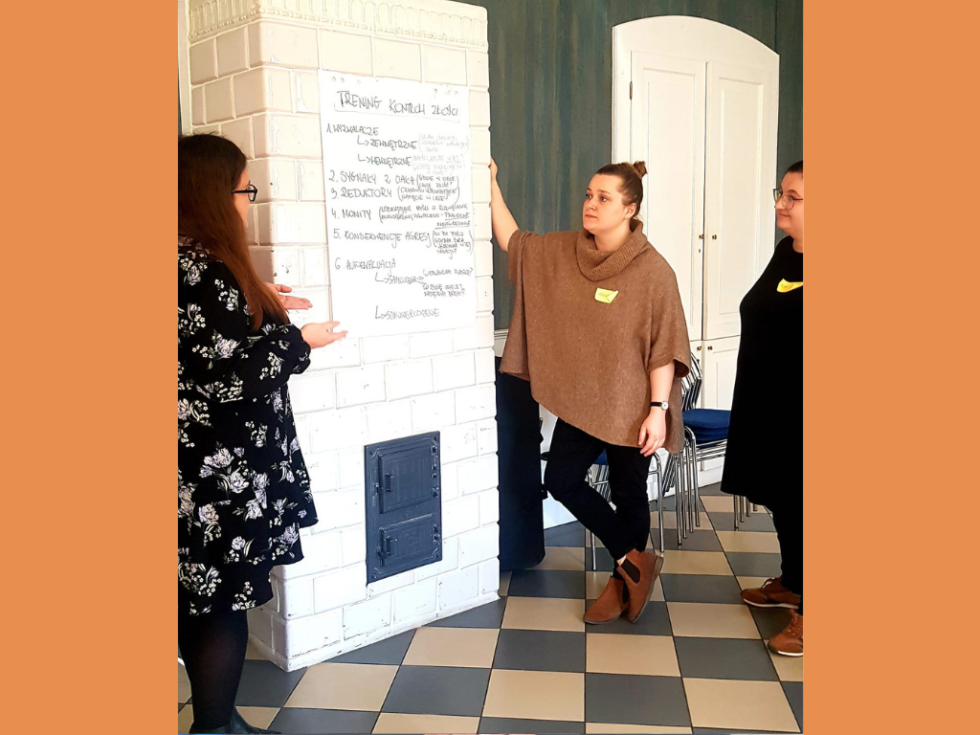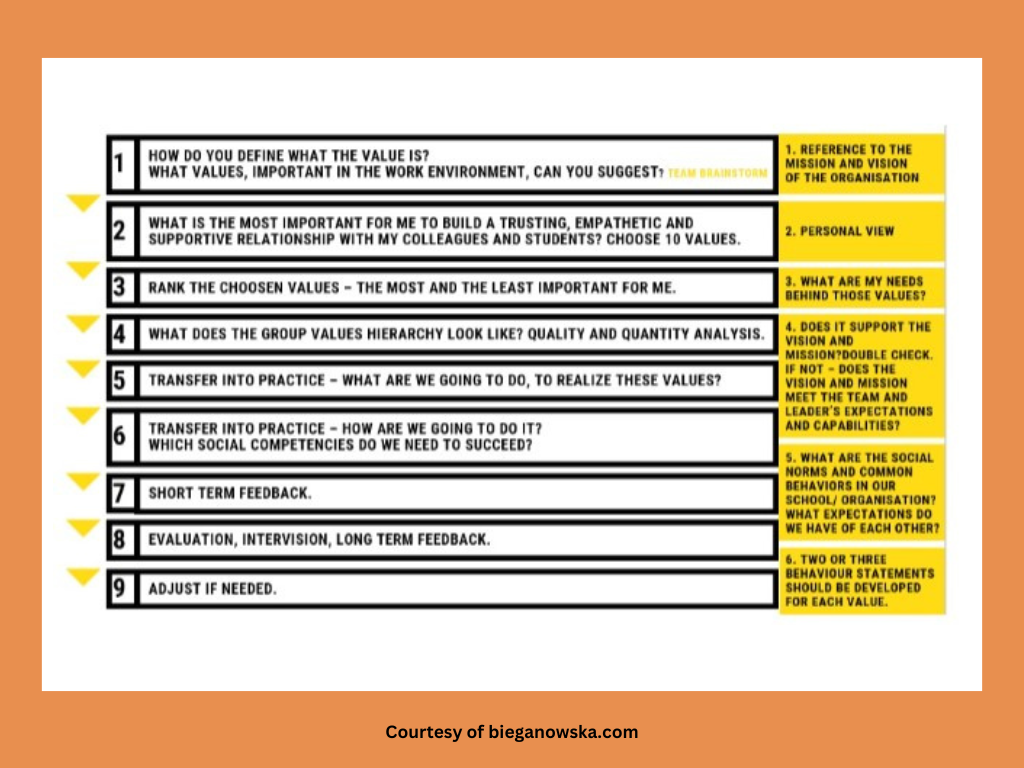
School Mission Statement and Core Values: Matching Words with Actions
GUEST WRITER (Cecylia Bieganowska): There is no such thing as a perfect team inside or outside of school. It’s safe to say that every team will go through a crisis at some point and that many will break, as a result. But some teams perform incomparably better than others – both in terms of communication and productivity, as well as with respect to the school mission statement.
So what’s their secret? How do they create a coherent image and experience for their students and parents? Ultimately it all boils down to this key question: What needs to be done so that the values a school communicates to the outside world become a practice in everyday school life?
In this article, Cecylia Bieganowska talks about why it is worth seeking answers to these questions, and how to use Aggression Replacement Training© for team-building to help change school culture. Cecylia is a Psychotherapist and Sociotherapist for children and adolescents based in Poland. She works with schools that want training for their teachers to re-align with the school mission statement and values in their everyday practice.
THE "WHY": VALUES AND TEAMBUILDING in schools
Common goals of team development are to increase morale and motivation, improve team performance, improve communication between team members, and build trust and empathy. It is necessary if you want to make team members feel more confident and positive about their work and improve cooperation or defuse conflicts.
Experience and research show that values-based contracts are a much better foundation for teams to build good relationships and consequently communicate values coherently to the outside world. When we use our values to make decisions, we make a conscious decision to focus on what is important to us. When values are shared, they strengthen internal cohesion in the group. Jamil Zaki, Ph.D. Department of Psychology at Stanford College hypothesizes in his research that when a group that is important to the individual holds a value, the individual’s values change.
Dr Zaki has developed a three-dimensional model that describes the contexts that influence or drive an individual’s values:
- The range between risk and safety constitutes the first dimension. People choose between an established value and an unproven prospect. We tend to be relatively risk-averse, so we prefer the benefit of the present above the greater danger of the future. We notice dopamine system activity when people choose a safe choice over a dangerous one while making decisions regarding a known value.
- As opposed to social isolation, the second component is social connectivity. As was previously noted, pleasing others is gratifying. But researchers have also discovered that gaining the approval of others is satisfying in and of itself.
- Social comparison is the third dimension that influences values. We derive value from being good, but also from being better than others.
What does this mean for us in terms of team building with values in schools? Here are some questions we can reflect on:
- What should we focus on when creating a contract based on team values?
- What dimension will be most evident in our group contract?
- What needs are we trying to meet?
- What difficulties is our team trying to overcome? (It is important that we try to name them for future social skills training).
Next, let’s shift out of reflection into action by considering the “how” part of aligning school mission statement words with actions through in-school training.
THE "HOW": FROM PERSONAL VALUES TO TEAM VALUES TO THE SCHOOL SOCIAL CONTRACT
There is a Chain of Action social contract exercise I lead teachers through in some of the training I do in schools. This 9-step process helps to clarify personal values teachers and school leaders have, and uses these as the building blocks to co-create a clear and cohesive school social contract.
STEP 1: CREATE A SAFE ENVIRONMENT FOR DISCUSSION
The most common mistake is for a team leader to announce and promote the values to the team. Through discussion, your team will clarify what the values mean and how they can be applied and modeled in daily work. It is important to prepare the team and create a safe environment for conversation. To this end, we usually start by implementing the Anger Regulation Training© and later the elements of the Moral Reasoning Training© (especially thinking traps and character traits).
STEP 2: DECIDE WHAT YOUR LIST OF TOP 10 VALUES ARE AND WHAT THEY MEAN FOR YOU AS A SCHOOL
A value like “honesty” may mean something different to each team member. To a teacher, it may mean always saying everything they think. To another person, it may mean putting up a few signs about things they disagree with and trying to avoid confrontation at all costs. It is important to take some time and try to define the shared values as precisely as possible.
The best way to explain your values is to give examples of what the value looks like in practice. We do not have to agree on everything, but we should try to find a definition that most members of the team can agree on.
STEP 3: YOU NEED TO DECIDE ON A SOCIAL CONTRACT FOR YOUR PARTICULAR SCHOOL SETTING
In creating the value list, we use qualitative and quantitative analysis. From what we end up with, we select only the top 3-5 values that are most important to support your team’s purpose.
This is also the moment to check if the values are in line with the mission and vision of our institution. If not, this is the moment to reflect as this could be very useful feedback for the school management about the reality of the school image and the daily work of the teachers. Your team members have most likely perceived many norms (positive and negative) that you did not know existed before.
The next step is to work out the group-specific behaviors that we agree on and that should reflect the application of our values in everyday school life. At this point, it is important to identify the specific social skills we need as a team to ensure that we apply these behaviors in a prosocial and non-aggressive way. For that, we incorporate PREPSEC’s Social Skills Training© to select specific skills that the team can practice as needed (e.g. asking for help, responding to failure, dealing with others’ anger, expressing one’s feelings, dealing with conflicting messages, or preparing for a difficult conversation). This is exactly where the “magic” happens. The values we want to teach in marketing and practice gradually become visible in the everyday life of the school community by being exemplified by the teachers.
Finally, review and revise the text later. As a rule, we try to gather short (every week/every month) and long-term (six months/a year) feedback from team members on how the actions we have defined behind our team values are now visible in our daily work. What creates a successful, healthy work environment today may change in a decade, a year – or even six months. Do not be afraid to adjust your contract as your team sees fit. Supervision with an external service provider or even discussion in school staff meetings would also be very helpful in understanding why some measures we have agreed on are not yet visible in our team life.
SO What can a social contract look like in a school setting?
Let us take a look at the short version of the social contract in one of the Polish high schools I have worked with.
The school’s mission statement says: “We are a friendly school that provides harmonious and
thorough development of the student’s personality and talents to prepare them for life in the world around them. We encourage collaboration between the family, the school, and the community when it comes to how the children living conditions and their education interact.”
The 5 most important team values for the teachers with respect to the school’s mission statement were: Honesty, Communication, Collaboration, Support, and Development. In the school social contract that the teachers created, these values were defined as:
- HONESTY: I express my emotions openly and without criticism, and I make every effort to manage my impulsiveness.
- COMMUNICATION: I quickly notify my team so that we can work together to resolve the issue if a student/parent, another instructor, or another team member does not treat me or another teammate with respect.
- COOPERATION: I promise to call for assistance before I drown, giving my team enough time to respond and assist before a problem develops.
- DEVELOPMENT: I am not trapped in schemes. I strive to be an artist in education and not just an educational employee.
This values-based team-building exercise builds a strong foundation for communication and aligning words with actions. So then do we turn a value-based Social Contract into action that aligns with the school mission statement? This is what I will now touch on in my conclusion.
CHANGING THE SCHOOL IMAGE WITH THE HELP OF Social Skills Training©
Working on a values-based social contract can change the quality of school relationships in the teacher-parent-student triad. By naming specific behaviors that should be behind the values and working through them with the help of Social Skills Training©, we can avoid the typical difficulty many schools face of “everyone knows the values, but no one applies them”.
We have a mission and a vision for the school, but our daily work is far from it. A social contract based on the values of the team and even the whole school community can be one of the tools that actually and in practice change the image of our institution.
ABOUT THE AUTHOR

Cecylia Bieganowska is a psychotherapist, sociotherapist for children and adolescents, Master Trainer of PEACE-ART Aggression Replacement Training, and Vice President of the PREPSEC International. PREPSEC (PRepare for Evidence-based Practice in Social Emotional Competence) is a worldwide organization for professionals focused on working with social and emotional competencies programs. Cecylia supports schools, institutions, and non-governmental organizations in the field of mental health prevention of students and teachers, team building, and non-aggressive communication. You can learn more about her work by visiting her official website: https://bieganowska.com/





